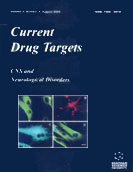Abstract
There have been extensive efforts to characterize the mechanism of action of volatile anesthetics, but their molecular and cellular actions are still a matter of debate. Volatile anesthetics act primarily on synaptic transmission in the central nervous system but proof of this as the predominant mechanism of action remains elusive. Changes in neurotransmitter release may relate to direct interaction of the anesthetic molecule with an ion channel protein or synaptic protein, but can also be a consequence of alterations in intracellular signaling. Calcium is one of the most important messengers in cells and its intracellular concentration may be modified by several agents including volatile anesthetics. Neuronal excitability is in part determined by calcium availability that is controlled by several mechanisms. Because voltage-gated calcium channels (VGCC) play a key role in controlling Ca2+ entry and in initiating cellular responses to stimulation through an elevation of intracellular calcium concentration ([Ca2+]i), they are thought to be one of the targets for volatile anesthetics. However, [Ca2+]i can also be altered without the participation of VGCC through receptor-mediated pathways. Indeed, calcium homeostasis is also controlled by plasma membrane Ca2+-adenosine triphosphatase, sarcoplasmic-endoplasmic reticular Ca2+-ATPase, the Na+-Ca2+ exchanger, and mitochondrial Ca2 + sequestration. Alteration of any of those mechanisms that control [Ca2+]i may lead to a change in presynaptic transmission or postsynaptic excitability. Here we will review some of the recent progress in identifying putative actions of volatile anesthetics, specifically the effect on intracellular calcium homeostasis in neurons.
Keywords: calcium signaling, intracellular calcium stores, intracellular calcium concentration, exchanger, plasma membrane, adenosine triphosphatase, volatile anesthetics, voltage-gated calcium channel
 4
4

















